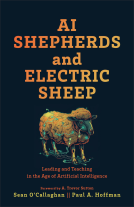
Antiracism
An Introduction
by Alex Zamalin
This title was previously available on NetGalley and is now archived.
Send NetGalley books directly to your Kindle or Kindle app
1
To read on a Kindle or Kindle app, please add kindle@netgalley.com as an approved email address to receive files in your Amazon account. Click here for step-by-step instructions.
2
Also find your Kindle email address within your Amazon account, and enter it here.
Pub Date Mar 19 2019 | Archive Date Jul 02 2019
Talking about this book? Use #Antiracism #NetGalley. More hashtag tips!
Description
An introduction to antiracism, a powerful tradition crucial for energizing American democracy
On August 12, 2017, in Charlottesville, Virginia, a rally of white nationalists and white supremacists culminated in the death of a woman murdered in the street. Those events made clear that racism is alive and well in the United States of America. However, they also brought into sharp relief another American tradition: antiracism. While racists marched and chanted in the streets, they were met and matched by even larger numbers of protesters calling for racism’s end. Racism is America’s original and most enduring sin, with well-known historic and contemporary markers: slavery, lynching, Jim Crow, redlining, mass incarceration, police brutality. But racism has always been challenged by an opposing political theory and practice. Alex Zamalin’s Antiracism tells the story of that opposition.
The most theoretically generative and politically valuable source of antiracist thought has been the black American intellectual tradition. While other forms of racial oppression—for example, anti-Semitism, Islamophobia, and anti-Latino racism—have been and continue to be present in American life, antiblack racism has always been the primary focus of American antiracist movements. From antislavery abolition to the antilynching movement, black socialism to feminism, the long Civil Rights movement to the contemporary Movement for Black Lives, Antiracism examines the way the black antiracist tradition has thought about domination, exclusion, and power, as well as freedom, equality, justice, struggle, and political hope in dark times.
Antiracism is an accessible introduction to the political theory of black American antiracism, through a study of the major figures, texts, and political movements across US history. Zamalin argues that antiracism is a powerful tradition that is crucial for energizing American democracy.
Available Editions
| EDITION | Other Format |
| ISBN | 9781479822638 |
| PRICE | $27.00 (USD) |
| PAGES | 224 |
Links
Featured Reviews
 Shannon M, Reviewer
Shannon M, Reviewer
This remarkable primer gives depth and breadth to a simple word with a complex meaning. People who mean well, but don't really know what they mean will find context, grounding, and pointers for future action--and this is a book all about the importance of informed action. People with more robust knowledge will find a succinct overview, and a clear framework for engaging the racist structures of American society.
 Gen D, Reviewer
Gen D, Reviewer
Thought-provoking, important and relevant read for audiences of all ages and all walks of life needs to read. It delves deep beneath the surface of racism, how to unlearn racist and cultural appropriation that was taught in society, intersectionality, and more. I recommend this for everyone, especially in today's political and social climate. We can all learn something from it.
 Em B, Reviewer
Em B, Reviewer
A really good study detailing American anti-racism. It is a much-needed book at this moment and it details current events, as well as history of anti-racism in the US. It would be great to have more about the non-US context, but I understand that it wasn't the point of the study. This study is written in an easy to understand manner so it's not just for academia.





